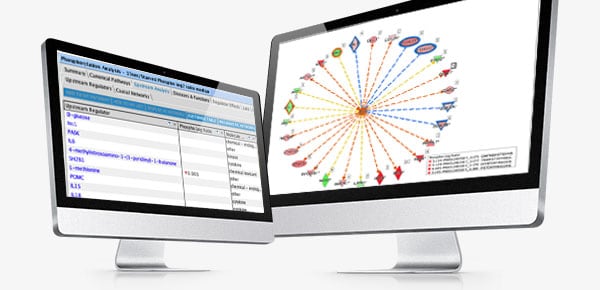


















Ingenuity® Pathway Analysis (IPA®) is a powerful analysis and interpretation tool for uncovering network interactions and identifying new targets or candidate biomarkers within the context of biological systems. Here, we’ve rounded up a handful of the most interesting recent papers that have cited its use.
A University of Manchester-based research team developed this report on better understanding the pathology of keloid disease, an aggressive, locally invasive form of tumor. With the intention to apply a novel, three-method approach to this disease, the team used IPA to enrich the intersecting data. “IPA was chosen as the primary mode of enrichment analysis as all pathways, ontologies and interactions are manually curated and have supporting literature data behind them, thus providing a very robust and standardised platform for interpreting differential gene lists from transcriptomic studies,” the authors wrote. The team concluded that this research will not only provide an investigative starting point for other heterogeneous dermatological conditions, but also that it may have clinical implications for the future management of keloid disease.
The April issue of Oncotarget included a compelling report on advances in prostate cancer research. Prostate cancer is common among men from Western countries and is a major contributor to cancer-related deaths. Compiled by a German team, the report detailed a study of TMPRSS2:ERG (T/E) gene fusion variants, which are present in 50% of tumors and are the most frequent somatic alteration. They used IPA and the underlying QIAGEN Knowledge Base for functional annotation and pathway enrichment of differentially regulated genes, finding important signaling pathways. This research enabled the team to confirm the value of using ALK1-blocking agents to stall progress of certain prostate cancers.
Typically caused by intrauterine inflammation, preterm birth is a leading cause of neonatal mortality. Infants who survive have an increased risk for lifelong disabilities. A Baltimore-based team used the established mouse model of intrauterine inflammation-induced preterm birth and deployed IPA to analyze the transcription profiles, which helped identify Nuclear erythroid 2-related factor 2 (Nrf2) as a prominent upstream regulator. The scientists determined that Nrf2 — a transcription factor that regulates the response to oxidative and inflammatory stress — was a contributor to susceptibility for not only preterm birth but also a variety of environmental diseases, ranging from cigarette smoke-induced emphysema to allergen-induced asthma and polymicrobial sepsis. Their paper ran in Scientific Reports and urges future human studies to confirm the theory that pharmacological activation of Nrf2 might reduce inflammation and oxidative stress, the leading indicators of preterm birth.
Arthritis Research and Therapy recently ran a study focused on candidate genes for rheumatoid arthritis from a group of researchers at the Karolinska Institutet/University Hospital in Solna, Sweden. The report detailed the team’s process to identify new candidate genes and molecular pathways that are potentially involved in rheumatoid arthritis pathogenesis and which might be tested in the future as drug targets. The scientists used IPA’s experimental evidence database (human, mouse, and rat) for network construction and analysis, finding that out of 377 genes from rheumatoid arthritis-associated loci, 22 were differentially expressed, suggesting that at least three new candidate genes are involved in disease development: ERBB2, TP53 and HTOP1.
A French team looked at ways in which the meat industry might trim feed costs for pig meat production, aiming to describe shared and specific molecular responses in different tissues of pigs for residual feed intake. They used IPA to visualize plausible regulatory networks that included expression changes and to generate functional hypotheses and identify central molecules in small sub-networks. The team found that non-productive functions in metabolic tissues are likely important processes for feed efficiency — so dietary compounds with both anti-inflammatory and anti-oxidant activities might improve feed efficiency for pigs. They published their findings in BMC Genomics.
If you’re willing to share how you are using QIAGEN Bioinformatics tools in your workflow, we’d love to hear about it! Please contact us here; we’d also be happy to arrange a trial of Ingenuity Pathway Analysis.